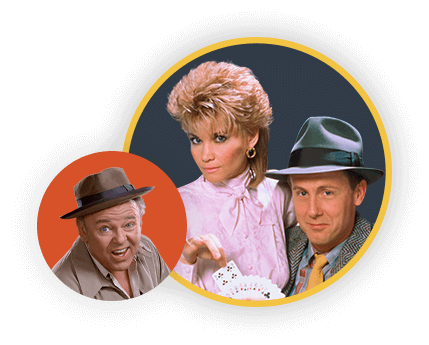Horse around with these 14 fascinating facts about 'Mister Ed'

Top image: AP Photo
A horse is a horse, of course, of course. Unless the horse is the famous Mister Ed!
From 1961 to 1966, the comical tales of Wilbur Post and his talking horse made for an unlikely sitcom success. Though it was never a ratings smash, the comedy kicked its way into the American consciousness. Who doesn't know that theme song?
It's been half a century since Mister Ed finished its original run. Here are some things you might not know about the show.

The character's origin traces back to 1937.
The character first appeared in the short story "The Talking Horse" in the September 18, 1937, issue of Liberty magazine.
Image: avalon-collectibles / eBay

A secretary pitched the idea for a television show.
UCLA graduate Sonia Chernus began working at Warner Bros. as a secretary in the 1940s, eventually moving up to be a reader and story editor under director Arthur Lubin. She was a fan of Walter Brooks' short stories about the talking horse and pushed the idea for a series. For this, she earned the atypical screen credit of "Format Developed by Sonia Chernus."

Clint Eastwood appeared on the show.
The Hollywood legend, a friend of Sonia Chernus, appeared as himself in the episode "Clint Eastwood Meets Mister Ed," which aired late in season two in 1962. Chernus would go on to write the screenplay for The Outlaw Josey Wales.

George Burns produced the pilot.
The cigar-chomping comedian served as an executive producer and helped finance the $70,000 pilot episode. Burns would later appear on the series in the second season, too.

Eddie Albert turned down the role of Wilbur.
The Green Acres star also turned down the lead role in My Three Sons. He wanted to focus on his film career at the time.

Scott McKay played Wilbur in the pilot.
The 1958 pilot went under the title "The Wonderful World of Wilbur Pope." McKay's television career dates back to 1950, though the actor never landed a major small screen role. He did appear on episodes of Alfred Hitchcock Presents, Mannix and Climax!, to name a few of his gigs. Alan Young, of course, of course, would take over the role of Wilbur for the series.

Fox shot a 'Mister Ed' reboot in 2004.
Sherman Hemsley of The Jeffersons provided the voice of the horse in the attempted 21st-century remake. Stand-up comedian and former Saturday Night Live writer Drake Sather, the writer and producer of the show, committed suicide before production was complete. The pilot was not picked up.
Image: Sony Pictures Television

The first seven episodes used an instrumental version of the theme song.
Lyrics were later added by songwriters Jay Livingston and Ray Evans. Livingston sang the lyrics as a placeholder, but the network liked his version enough to keep it.

The Studebaker automobile company was the original sponsor.
That would explain why the Posts cruise around in a 1962 Lark convertible. The South Bend automaker eventually withdrew its sponsorship as the company was in its twilight, folding before the end of the 1960s.

Allan "Rocky" Lane was the uncredited voice of Mister Ed.
Speaking of South Bend, Western B-movie star Allen "Rocky" Lane was a native of neighboring Mishawaka, Indiana. The screen cowboy gave Mister Ed his distinctive voice. Some of his biographies claim he played football while attending Notre Dame University. However, some contest this fact and claim it was something whipped up by his studio or agent, while the book Shooting Stars of the Small Screen: Encyclopedia of TV Western Actors reports that Lane dropped out of the school.
Image: amestrib.com

Bamboo Harvester was the real name of the horse.
Born in the 1949, the palomino lived until 1970.

There was also a stunt double named Pumpkin.
Pumpkin looked identical, save for a gold spot on the horse's white patch. The crew would cover up the patch with makeup when shooting scenes.

The show began in syndication.
Mister Ed began its life in syndication before proving itself worthy of a network. CBS picked up the series after 26 episodes.

The horse consumed 20 pounds of hay and a gallon of sweet tea each day.
That's not all he consumed. Alan Young once explained in an interview that they used peanut butter to get Bamboo Harvester to move his lips and "talk."




